When Hurricane Matthew hit Haiti on 5 October, the fields where crops were grown were washed away; houses were flattened like cardboard boxes and hundreds of people were killed. The number of dead is now close to 1000 and cholera is once again a fatal danger on our shores. UNICEF says more than 600,000 […]
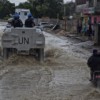
Haiti: disaster prone and ill-equipped to fight corruption

Ending corruption, ending poverty – how will the SDGs measure up?
This week the United Nations will agree on 17 sustainable development goals. Goal 16 makes the case that fighting corruption is at the heart of delivering a better world. We have argued this case for many years and are beginning to amass the data to prove this. That’s why it is so important that in […]

HOW TO MITIGATE CORRUPTION RISKS IN AID FLOWS?
Corruption is a major threat to public funds – and not just in the developing world. According to a recent report commissioned by the EU anti-fraud agency OLAF, € 901 million should be recovered after proven fraud or corruption in EU funds. One of the greatest concerns of any donor is how to minimise the […]

Following the money: why transparent development finance matters
Different numbers have been floated around for what it would cost globally to end poverty, stop climate change and make sure no one goes hungry. These numbers add up into trillions of dollars. How are we going to keep track of the money to make sure it is not wasted, lost to corruption or mismanaged? […]
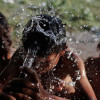
Measuring development: why statistics matter
Co-written by Tom Wheeler, Conflict and Security Advisor for Saferworld Last week in New York the United Nations Statistical Commission met to discuss what indicators it can use to measure the new set of development targets that the UN will adopt in September to follow up on the Millennium Development Goals. This is important because […]
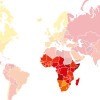
Sub-Saharan Africa: corruption still hurts daily lives
Once again, the Corruption Perceptions Index results are not fundamentally different from previous years: the majority of African countries still have a score of less than 50 per cent, which in our view depicts a situation of endemic corruption. In a continent with high level of economic growth rates (compared to many parts of the […]
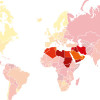
Middle East and North Africa: a region in turmoil
Three out of the bottom 10 countries on Transparency International’s 2014 Corruption Perceptions Index are from the Middle East and North Africa. Two of these three are in the midst of gruesome civil wars where lives are being lost daily. Iraq and Libya tell a story of a region in turmoil plagued with geopolitical insecurity, […]
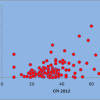
Putting public sector corruption on the map
The Corruption Perceptions Index, the annual index of perceived levels of public sector corruption around the globe, enters its 20th year of publication this year. Over the past two decades, the index has become one of the key corruption indices worldwide. There is a Harvard case on it and it has even been used as a […]
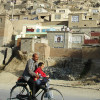
Challenging corruption in Afghanistan
Two years ago all the major donors to Afghanistan met in Tokyo to map a way forward for the war-torn country. Then president Hamid Karzai promised if the money kept coming in he would ensure it would not be lost to corruption. At the time Transparency International recommended a raft of measures aimed at curbing […]

Can big data solve the world’s problems, including corruption?
Governments, academics and tech gurus over the last couple of years have been transfixed with the prospect that better and bigger data can help us solve the world’s more entrenched problems – including corruption and poverty. The United Nations has also caught on to this trend and yesterday released a report, compiled by experts, which […]
- State Capture in South Africa 14 February 2017
-
 What’s next for Ukraine?
16 December 2016
What’s next for Ukraine?
16 December 2016
-
 Cleaning up sport: conflicts of interest at the top
9 December 2016
Cleaning up sport: conflicts of interest at the top
9 December 2016
-
 OGP: France must do more to tackle corruption
9 December 2016
OGP: France must do more to tackle corruption
9 December 2016
-
 Pharma companies in Slovakia: Uncovering conflicts of interest
9 December 2016
Pharma companies in Slovakia: Uncovering conflicts of interest
9 December 2016
-
Nokubonga Ndima: Young people can make a change for a better future...
-
Benjamin M: Very good article! Congrats!...
-
arun kottur: In India sports minister was involved decades are ...
-
Ekonomi: Very beneficial article. Thank you very much. htt...
-
ksweeney1: I do not agree that https://apex.aero/2016/09/22/g...
Search
Categories
Latest news from Transparency International
No items, feed is empty.

 Connect with us on Facebook
Connect with us on Facebook Follow us on Twitter
Follow us on Twitter